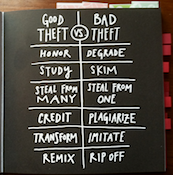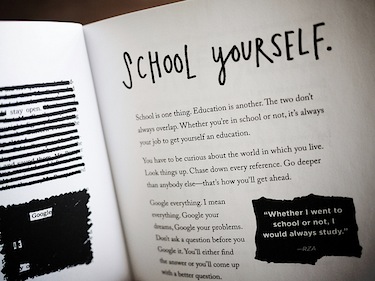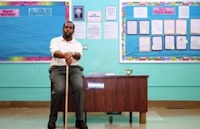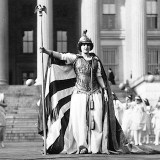Don’t Be Afraid to Steal Like a Teacher
This summer, I’ve decided to dust off a few books I’ve had waiting in my bookshelf. One of those was Austin Kleon’s Steal Like An Artist, a quick guide for creatives who have no idea where to start developing their inner artist. Some of the principles can apply to teaching if we heed one of Austin’s major warnings:
Nobody is born with a style or a voice. We don’t come out of the womb knowing who we are. In the beginning, we learn by pretending to be our heroes. We learn by copying.

I don’t want to give away the entire premise, but then he says …
The reason to copy your heroes and their style is so that you might somehow get a glimpse into their minds. That’s what you really want – to internalize their way of looking at the world. If you just mimic the surface of somebody’s work without understanding where they are coming from, your work will never be anything more than a knockoff.
We steal our style
I think that anyone in any given profession can apply this idea. One of the first things I learned as a teacher is that we steal a lot. Back in a July post at my blog I called BS on “best practices”. After some thinking, I realized that the practices we pick up depend on a couple of factors, including (a) our personalities, (b) how well they worked when we saw them in action, and (c) who’s doing it.
In my first couple of years as a teacher, I saw every math teacher in the building at least five times, sat in on other respected teachers in the building anywhere from two to ten times, and started following math websites to get a sense of how they approached math pedagogy. After year three, I developed my “own” style.
But after reading Kleon’s book, I found that my style was really an imperfect copy of all the good models for teaching I had seen and heard. None of it was new per se, but I brought my own rendition to these performances. Each year, I try to refine my practice and get better at my art, even when I’m supposed to be “off for the summer.”
Intelligent adaptation

- Steal like a teacher.
- Don’t wait until you know who you are to get started.
- Write the lesson that you’d want to see taught to you.
- Use your hands.
- Side projects and hobbies are important.
- The Secret: Do good work and share it with your colleagues.
- Geography is no longer our master.
- Be nice, even when you’re not smiling.
- Keep a routine for yourself and your students.
- Less is more. Creativity is subtraction.
Sometimes, our work gets stale. When it does, I often need a shot of adrenaline, namely in the form of doing side projects, changing up a unit plan, or hopping on a social network to see what other ideas might pop up.
Many of my ideas in the classroom didn’t even come from a teacher. An idea might have come from a conversation with a graphic designer or a parent. Our world holds a ton of inspiration, and if we can steal it in the right way, we might make something new.
This is the remix.

José’s first book, This Is Not a Test, was published in Fall 2014 by Haymarket Books. He is one of eight teachers profiled in the new book Teacherpreneurs. A version of this post first appeared at his blog.



































This is amazingly fresh and eye opening. I’m about to dive into my first year of teaching and this was one of the first articles that sparked some genuine excitement about my year.
This is SO True! I am a lateral entry teacher which means I don’t have an education degree. I teach science to middle schoolers because I have a science degree. I learned to be a successful teacher by watching my mentor teacher and others, reading, watching videos….studying! I am a remix of others!